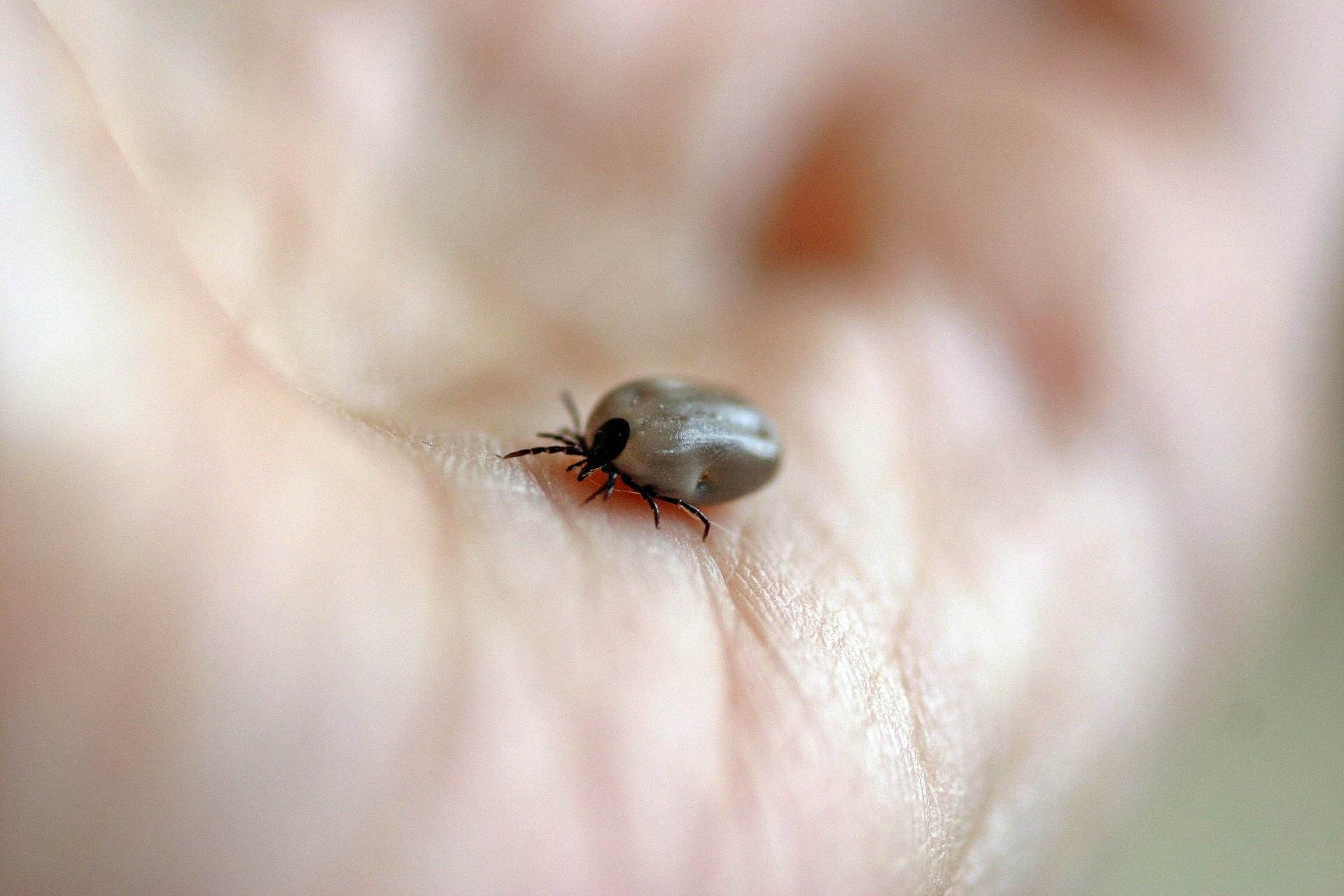You found a tick: What to do now

One of the biggest concerns to exploring the outdoors is exposure. You are vulnerable to the elements, wildlife, the sun, and even run the risk of being exposed to insects or plants that can irritate or harm you. A common concern is the risk of a tick latching onto you or your dog while out in a wooded area.
A tick is an arachnid that is also a parasite. It will burrow it’s mouthparts into your skin in an effort to feed itself, not only causing discomfort but running a risk of diseases. So what do you do if you find out that a tick has latched onto you?
1. Remove the tick

If the tick is embedded into the skin, the first thing you need to do is remove it. The best way to go about this is to use a set of tweezers. Some people have claimed that using a match or petroleum jelly would encourage the tick to back out of your skin, but that is not the case. Instead, those means can just irritate the tick. In this case, the tick can turn into a kind of syringe that injects its fluids back into the open wound, running a bigger risk of causing infection.
Instead, use a pair of fine-topped tweezers and grab the tick as close to the skin as possible. You will then need to pull it out evenly and straight. Do not squeeze the tick because you do not want tick fluids in your skin either. Be sure that the entire thing, including the head, is removed from your skin. If a piece of the tick has remained in your skin, do not attempt to dig it out yourself. You can wind up with an infection or make the wound larger. It is best to have a medical professional remove it for you.
2. Clean the wound

You will be left with either a red dot or puncture wound if the tick had embedded itself in your skin. First, dispose of the tick. Then wash your hands and the skin where it was attached thoroughly with soap and warm water.
3. Do you need help

At this point, you will need to determine whether the tick bite will warrant a visit to the doctor. If a piece of the tick was left in and your skin begins looks infected, it is best to see a physician to remove the piece and treat an infection.
There are various types of ticks out there, so try to pay attention to what the tick looked like. Deer ticks, found in the northeast, Midwest, and mid-Atlantic region can carry a variety of tick-borne illnesses, including Lyme disease. These ticks start small and are brown. Brown ticks with white collars generally do not transmit Lyme disease. Other areas in North America are less likely to have exposure to Lyme disease.

If you think you have been bitten by a deer tick, you can see your physician about receiving an antibiotic to help prevent the disease. If you start showing signs of Lyme disease, including a bull’s eye rash around the bite, fatigue, chills, and other flu-like symptoms, you can still receive antibiotics to help combat it.
Make sure you call your doctor for any concerns regarding Lyme disease, Rocky Mountain spotted fever or any other potentially tick-transmitted disease. It is always better to be safe than sorry when it comes to ticks. And the sooner you receive treatment, the sooner you will start to feel better. Always remember to have someone look you over after a hike through the woods to check for ticks and do the same for your furry friends. Be safe out there.
If you have any comments then please drop us a message on our Outdoor Revival Facebook page
If you have a good story to tell or blog let us know about it on our FB page, we’re also happy for article or review submissions, we’d love to hear from you.
We live in a beautiful world, get out there and enjoy it. Outdoor Revival – Reconnecting us all with the Outdoors.
